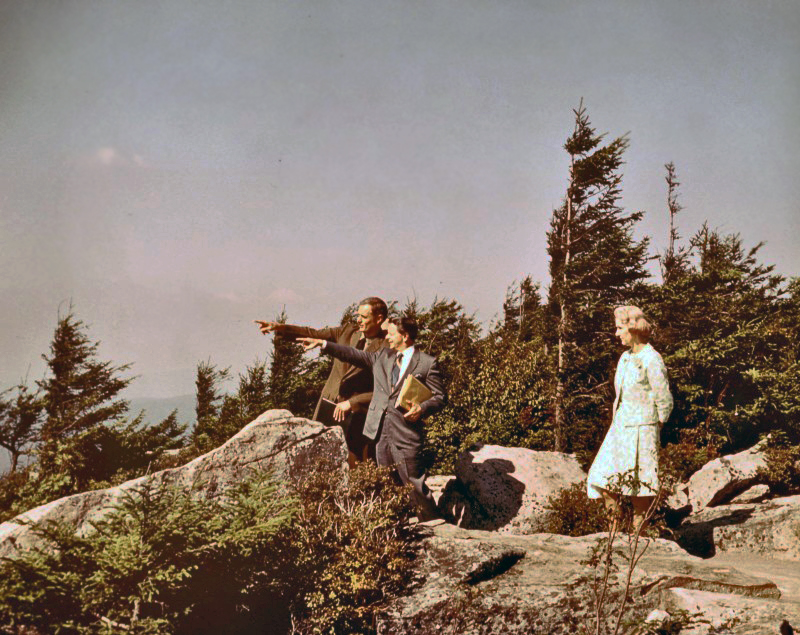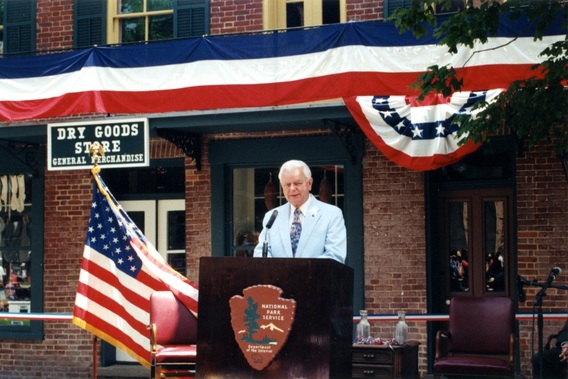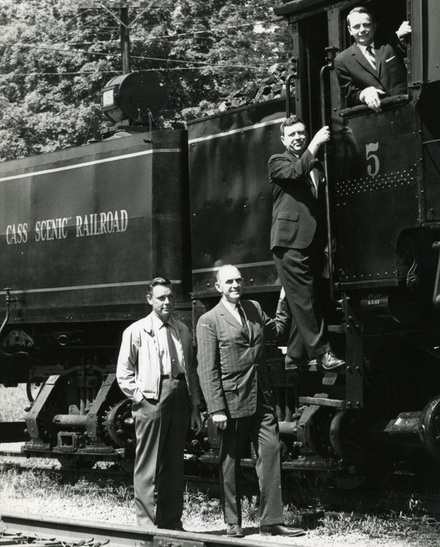|
By Jody Brumage In 1992, Senator Robert C. Byrd wrote in one of his Byrd’s Eye-View columns that “I have long believed that West Virginia is a prime site for the development of a viable and productive tourism industry.” While West Virginia’s official greeting, “Wild, Wonderful, West Virginia,” is widely known today, that has not always been the case. Asserting West Virginia’s role as a major tourism attraction was a major goal of Senator Byrd’s congressional career. In 1961, during his first term in the U.S. Senate, Byrd published a Byrd’s Eye-View entitled “Tourism can be New Big Industry for West Virginia,” stating that “The only reason West Virginia’s tourism industry is not currently enjoying its full potential is that the State lacks the kinds of developed recreational areas and facilities needed to attract great numbers of travelers.” Byrd identified two key problems in the statement: first, West Virginia lacked a sufficient number and variety of areas set aside for tourism, and second, the state also lacked infrastructure to bring tourists to these places. Byrd’s lengthy career in public service would address both of these problems. In 1953, West Virginia had only three Federally-protected areas within its borders: portions of the Chesapeake and Ohio Canal, the George Washington National Forest, and the Monongahela National Forest. A fourth location, the town of Harpers Ferry, was a national monument, but was not yet being actively preserved or opened for tourism. In addressing the lack of designated tourism areas, Senator Byrd and other West Virginia legislators worked to highlight the unique and significant places that would make the state more attractive to visitors. The natural beauty of the state was emphasized through the establishment of new National Recreation Areas at Spruce Knob/Seneca Rocks (1965) and Gauley River (1988). Wildlife Refuges were established at the Ohio River Islands (1990) and in the Canaan Valley (1994). Nine Wilderness Areas were established throughout the state including Dolly Sods (1975), Cranberry (1983), and Roaring Plains West (2009). Senator Byrd also appropriated funds for the development of the New River Gorge National River (1978). Nature was not the only aspect of West Virginia’s tourism that concerned Senator Byrd. The state’s numerous historical sites also received attention from Byrd, including Harpers Ferry, where he worked to expand the park’s boundaries and establish a visitor’s center after the town was designated a National Historical Park in 1963. Another area to be recognized for its history was Wheeling, where a National Heritage Area was established in the 1990's. By 2010, West Virginia was home to twenty Federally-protected areas, an increase of over 500% during Byrd’s 57 years in office. Senator Byrd also aided the state in funding its own parks and recreation areas. Today, West Virginia maintains 36 state parks. Through his efforts, a tourism research center was established at Concord College (now Concord University), providing an institution to study West Virginia’s present and future tourism possibilities. Senator Byrd addressed the major issue of infrastructure. The improvement of the roads, bridges, airports, railroads, locks/dams, and other infrastructure needs in the State of West Virginia became one of the most defining aspects of Byrd’s career. Not only did these improvements facilitate tourism, but they also enhanced the state’s industrial, commercial, and educational institutions. Byrd supported the Appalachian Regional Commission (ARC), established in 1965. The ARC created a forum where ideas for the betterment of the Appalachian Region could come to fruition, backed by Federal support. Most importantly, the ARC provided the groundwork for the building of the corridor highway system, which opened previously inaccessible areas to easy transportation. Byrd remarked: “I look forward to the completion of each mile of these roads because they provide a safer, more modern route for the West Virginians who live along it and for visitors who come to discover the beautiful scenery of our state.” Through the corridor system and other infrastructure projects, Senator Byrd paved West Virginia’s path to the future, and also enhanced the path into the state’s natural and historical treasures. Senator Byrd kept West Virginia’s tourism industry in his focus throughout his congressional career, making it one of his many lasting legacies in the state. In a 1991 column, Byrd wrote: “West Virginia is America’s sleeping tourism giant. I believe that the improvements and projects contemplated in my amendments and related efforts that I am working on to make our state more appealing for tourism, will go far toward creating more jobs for West Virginians and developing a more viable and prosperous tourism industry in scenic West Virginia.”
Comments are closed.
|
Welcome to the Byrd Center Blog! We share content here including research from our archival collections, articles from our director, and information on upcoming events.
Categories
All
Archives
July 2023
|
Our Mission: |
The Byrd Center advances representative democracy by promoting a better understanding of the United States Congress and the Constitution through programs and research that engage citizens.
|
Copyright © Robert C. Byrd Center for Congressional History and Education
|




 RSS Feed
RSS Feed
